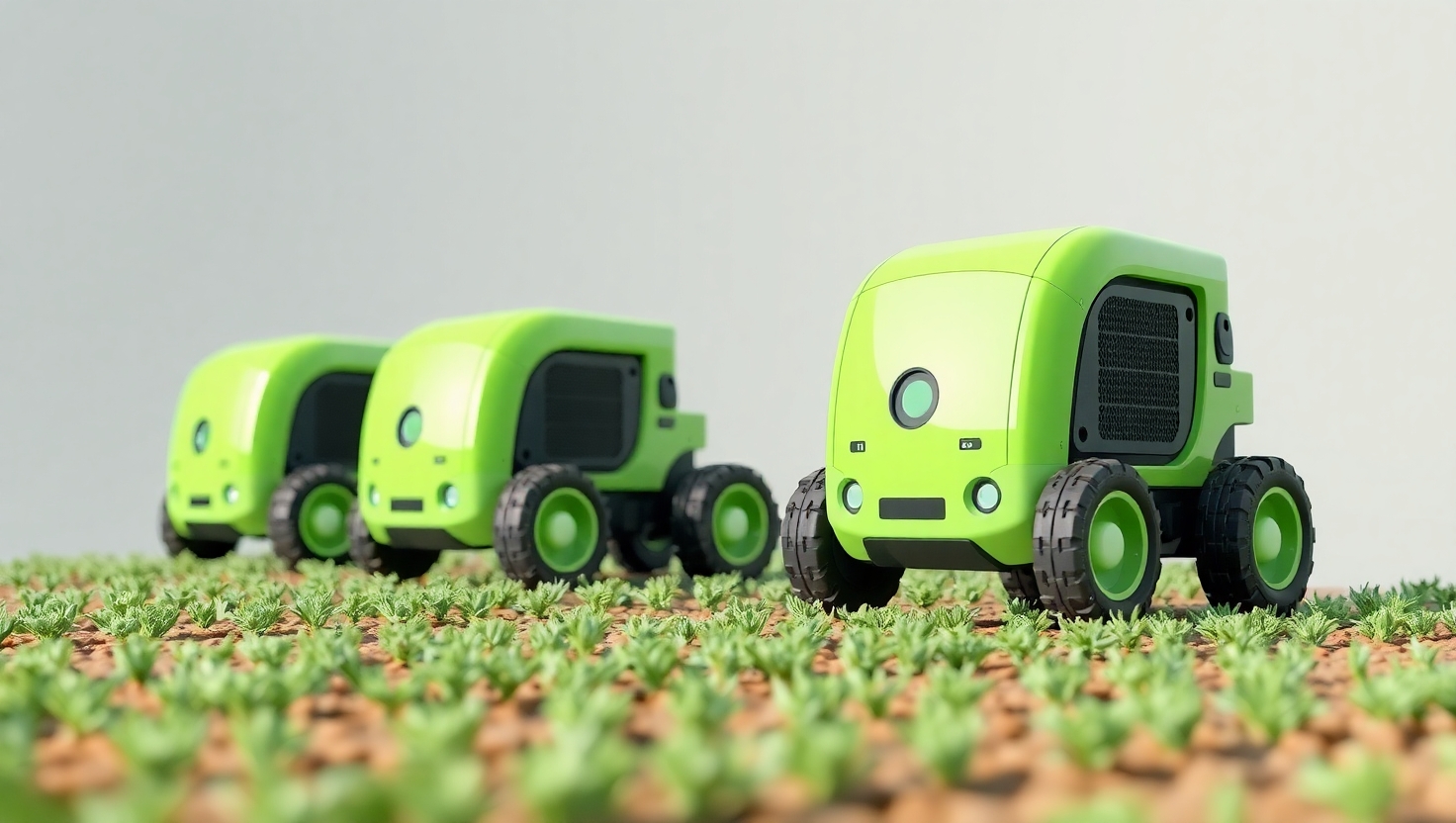Agriculture, one of the oldest professions in human history, is undergoing a genuine revolution in recent decades. In an era where the world population is rapidly growing, land and water resources are dwindling, and climate change poses unprecedented challenges, farmers are turning to advanced technological solutions. One of the most promising solutions is the integration of robots in precision agriculture – a field that brings precision, efficiency, and sustainability to an entirely new level. We’re no longer talking just about autonomous tractors, but about an entire array of smart machines assisting in all stages of agricultural growth, from sowing to harvesting.
Until about a decade ago, most agricultural activity depended on manual labor or traditional mechanical tools. Farmers relied on their experience and knowledge passed down through generations to make decisions regarding planting times, irrigation amounts, or pest control. Today, agricultural robotics offers a completely different approach, based on precise data and targeted intervention. Instead of treating the field as a single unit, robots can identify and treat each plant individually, tailoring care to its unique needs, thereby saving valuable resources and increasing yield.
In the planting and seeding stage, agricultural robots demonstrate exceptional precision. Autonomous systems can map the field, analyze soil quality at each point, and adjust seeding depth and seed density accordingly. Systems like the Swiss “Ecorobotix” are equipped with advanced cameras and sensors that allow them to sow exactly in the right place and at the optimal depth, using 30% fewer seeds compared to traditional sowing methods. These systems can even work at night and in varied weather conditions, extending the window of opportunity for optimal planting.
Irrigation is one of the areas where robotics brings significant water savings – a resource that becomes increasingly scarce year by year. Smart irrigation robots such as the “FarmBot” combine information from soil moisture sensors, weather forecasts, and satellite imagery to determine the exact amount of water needed for each area of the field. These systems can adjust water quantities according to the type of crop, growth stage, and even micro-climatic conditions in different parts of the field. The result is savings of up to 50% in water consumption compared to conventional irrigation methods, while improving crop quality and reducing risks of diseases related to over-irrigation.
Pest control is a significant challenge in agriculture, and the traditional use of chemical pesticides takes a heavy toll on the environment and public health. Here too, robots offer an innovative and ecological solution. Robots like “Avo” by Ecorobotix are equipped with cameras and image processing systems capable of identifying weeds and pests at the individual plant level. Instead of spraying the entire field, the robot identifies the invasive plant or pest and treats it in a targeted manner, either by spot spraying, mechanical removal, or even using lasers to destroy weeds. This approach reduces pesticide use by up to 90%, prevents the development of resistance among pests, and lessens the impact on biodiversity.
One of the most complex challenges in agriculture is the harvesting process – a task that requires skill, precision, and substantial labor. The use of advanced harvesting robots allows farmers to cope with labor shortages and reduce costs. Robots like the “Agrobot” developed in Spain use multiple robotic arms, equipped with 3D cameras and proximity sensors, to selectively pick strawberries according to ripeness level. Israeli company FFRobotics has developed a robot capable of picking fruits from trees such as apples and pears at a rate of over 10,000 fruits per day, while causing minimal damage to the fruit and tree. These technologies promise more efficient harvesting, less waste, and improved quality of fruit reaching the consumer.
Beyond specific roles, robots serve as valuable information collection systems. As they roam the fields, they gather data on crop conditions, soil conditions, disease and pest occurrence, and growth performance. This data is processed using artificial intelligence algorithms, providing farmers with insights that were previously unavailable. For example, a robot like “TerraSentia,” developed at the University of Illinois in the USA, can move between rows of corn, collecting data on plant height, leaf color, and signs of disease, and provide the farmer with forecasts regarding crop development and optimal harvest timing.
The challenges to widespread adoption of robotics in agriculture remain significant. The initial cost of robotic systems is high, and their implementation requires technological knowledge that is not always available in traditional agricultural settings. Many farmers, especially in developing countries and small farms, struggle to finance the necessary investment. However, trends of collaboration, Robotics as a Service (RaaS) models, and government support are beginning to bridge the gap and make the technology accessible to a wider range of farmers.
The future of robotic agriculture promises even more. Developments in artificial intelligence, robotic autonomy, and machine-to-machine (M2M) communication are expected to lead to a fleet of agricultural robots communicating with each other and operating in full coordination. Imagine a swarm of tiny robots roaming the field, identifying pests and reporting them to a spraying robot that arrives at exactly the right spot; or harvesting robots coordinating their work to maximize efficiency and prevent duplication. Farmers will be able to manage larger farms, with fewer resources and less environmental impact.
The robotics revolution in agriculture is not just a matter of economic efficiency – it forms a significant part of the solution to global challenges of food security and sustainability. As the world population is expected to reach 10 billion by 2050, the ability to produce more food with less land, less water, and less environmental impact is critical. Agricultural robots enable this approach, turning precision agriculture from a vision into a practical path to a sustainable future.
In Israel, a country leading in agricultural innovation, we see impressive development of startup companies specializing in agricultural robotics. Companies such as Blue White Robotics, Tevel Aerobotics, and Fieldin are developing breakthrough technologies that attract global attention. The combination of local capabilities in robotics, artificial intelligence, and advanced agriculture positions Israel at the global forefront of the precision agriculture revolution. In conclusion, robots in precision agriculture are not just an interesting technological innovation but represent a significant response to fundamental challenges in modern agriculture. From sowing to harvesting, they are changing every aspect of agricultural work, making it more efficient, more environmentally friendly, and more sustainable. While full adoption of these technologies is still in its early stages, the trend is clear: the future of agriculture will be more robotic, smarter, and more sustainable than ever before.








